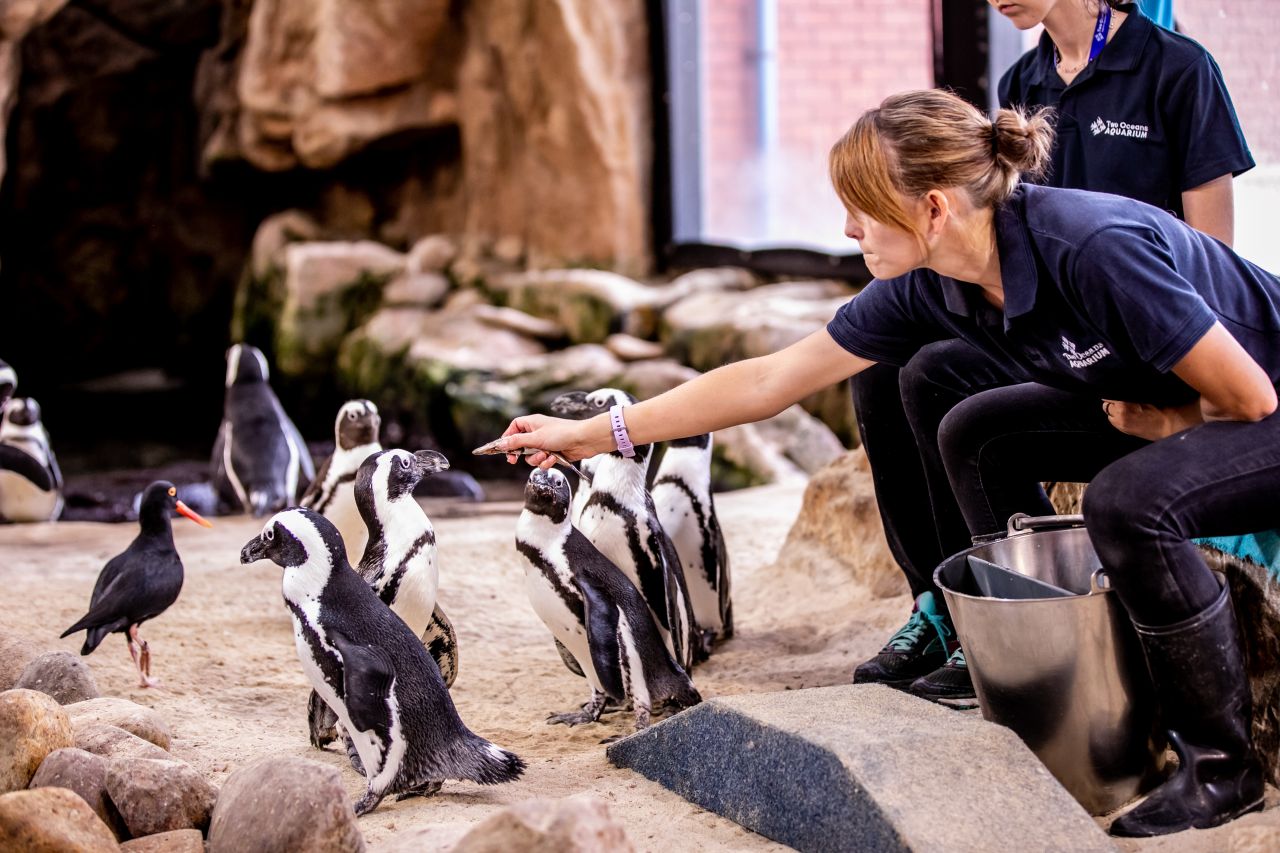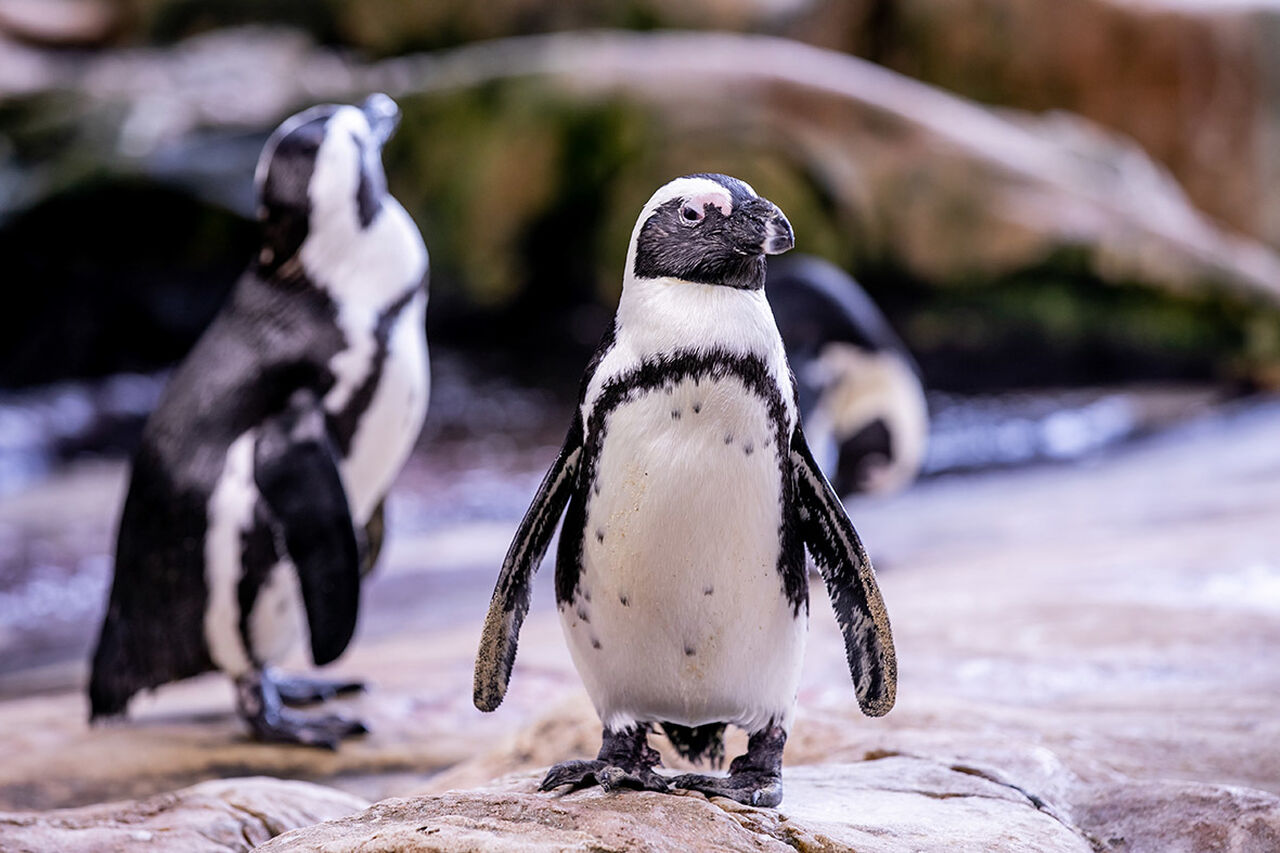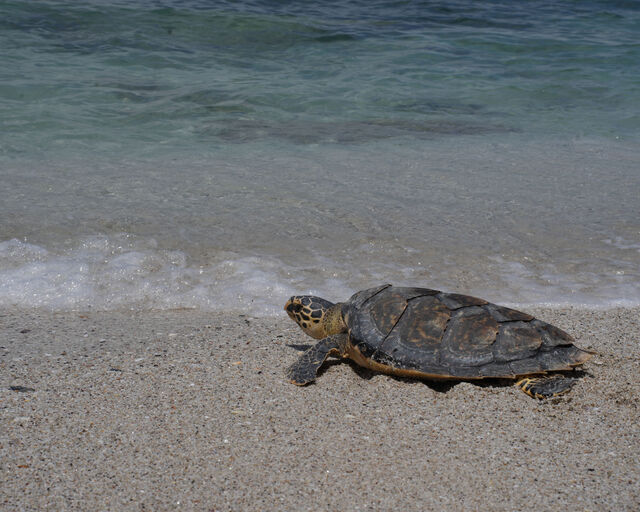A lot of the time we humans like to believe that we are superior to animals in every sense of the word. Well, African penguins are amazing animals with unique adaptations that make them true masters of their environment. In many ways, they are far superior to us! Here are 10 things that penguins do better than humans:
1. Walking on an empty stomach
Penguins walk with an adorable bum-wiggling, swagger-filled waddle. It looks very clumsy, especially compared to us humans - the only other animal that has evolved to walk with an upright spine. So clearly we are better at walking upright than they are, right?
Wrong. Actually, penguins do it more efficiently. When penguins walk, the top of their body acts as a pendulum (pengui-lum?) so they are only using energy to rotate a bit with each step. On the other hand, we need to partially lift our whole body up each time we take a step. The swaying of penguins allows them to recover as much as 80% of all the energy that they expend - making them about 20% more efficient than us. This is why penguins still have the energy to migrate and hunt even after long periods of fasting, as their waddle is the most efficient way to walk.
2. Rocking a tuxedo
Why are penguins black and white?
Many believe that the dark back and white belly serve as camouflage when they are underwater - but if you've ever looked at an underwater photo of a penguin you'd soon realise that this is not very effective. In fact, ancient penguins were red and grey - far better deep-water camouflage.
African penguins' black and white tuxedo colouration has a few other uses:
- Penguins can turn their black backs to the sun when they are cold, and their white bellies towards it when they are hot.
- Pigments in black feathers make these feathers stronger, so their backs can withstand the elements when they lie on their bellies.
- The high-contrast colours of penguins make them easily visible to each other, and enable them to coordinate with each other underwater.
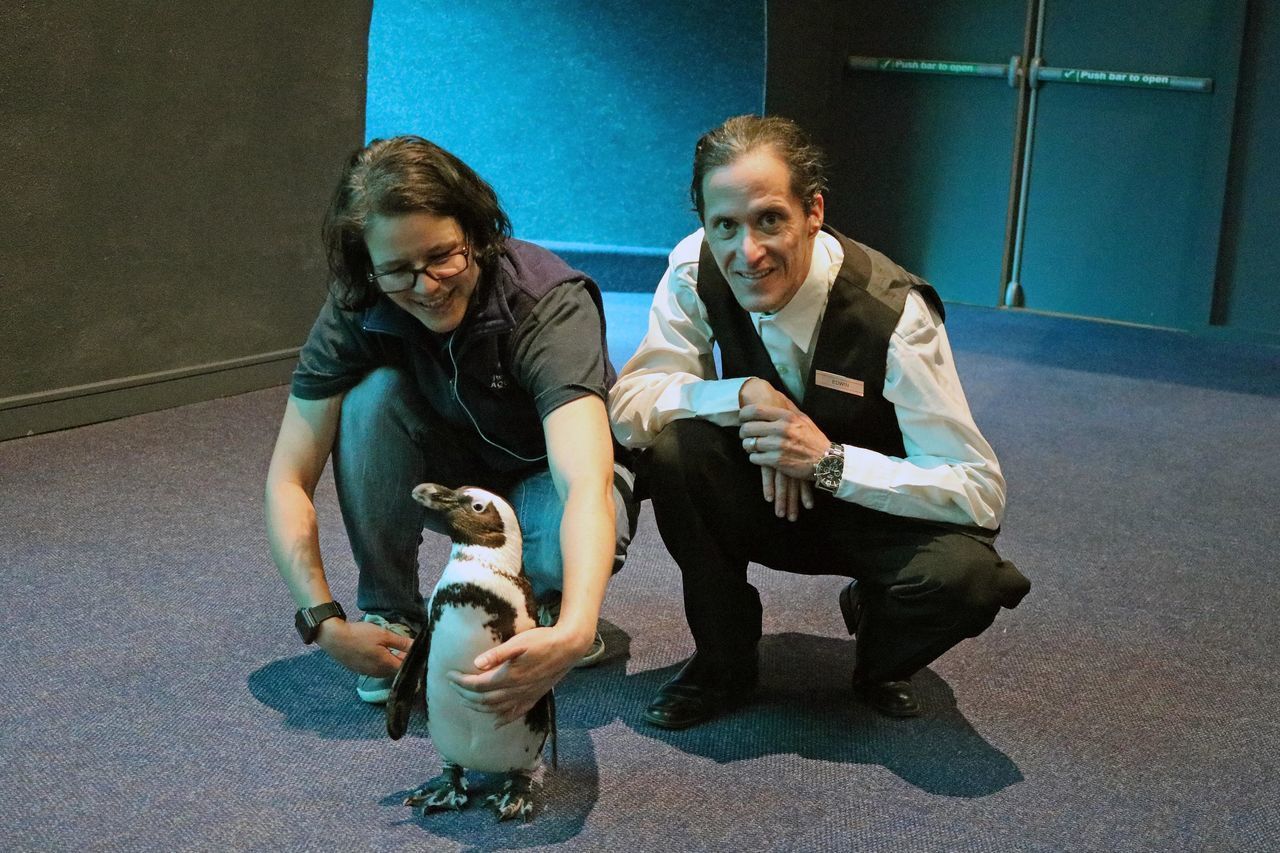
3. Seeing underwater
Have you ever opened your eyes underwater and noticed how blurry your eyesight becomes, and how the water stings your eyes? Well, penguins don't have this problem!
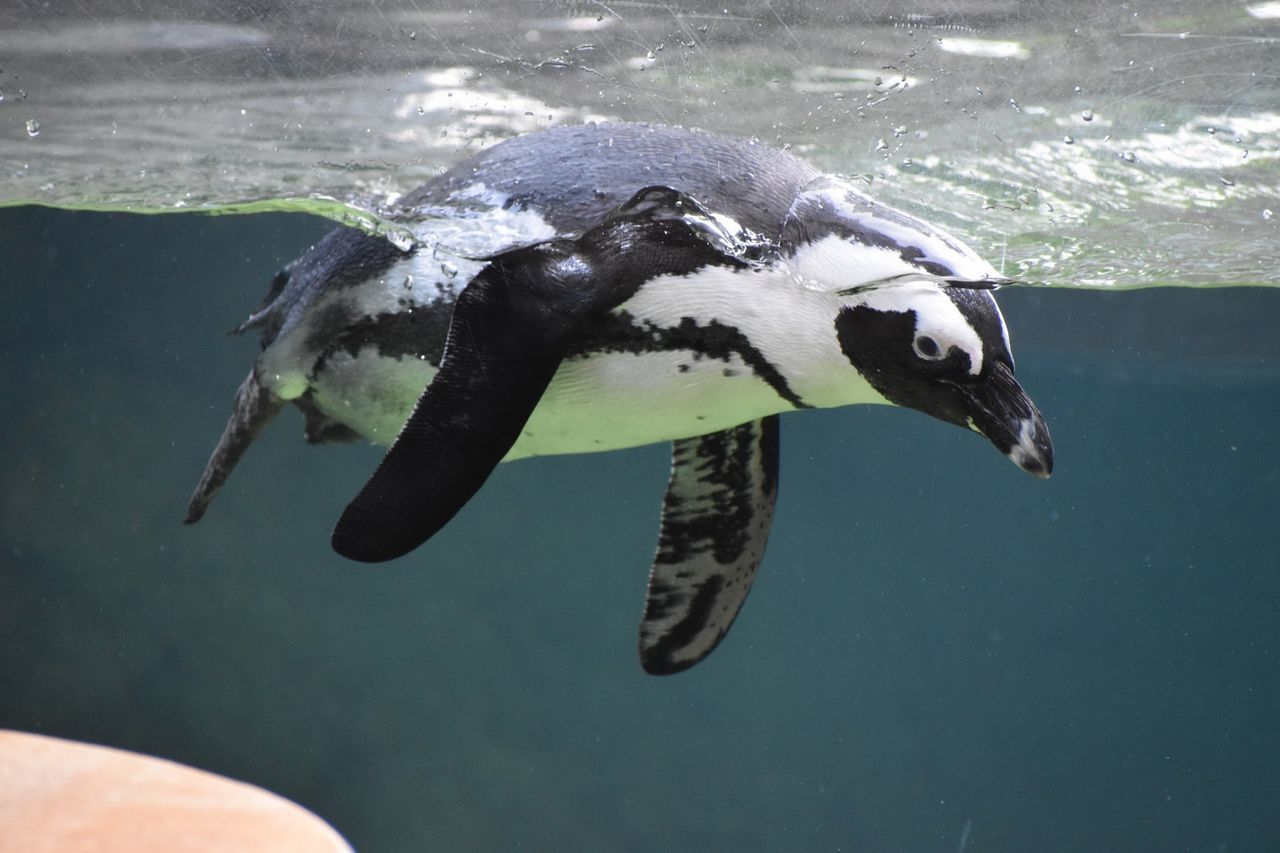
4. Being adorable
African penguins are an excellent example of something conservationists call "charismatic megafauna": big, lovable animals that inspire people to support conservation, which aids the species' entire environment and the "less adorable" species it shares this environment with.
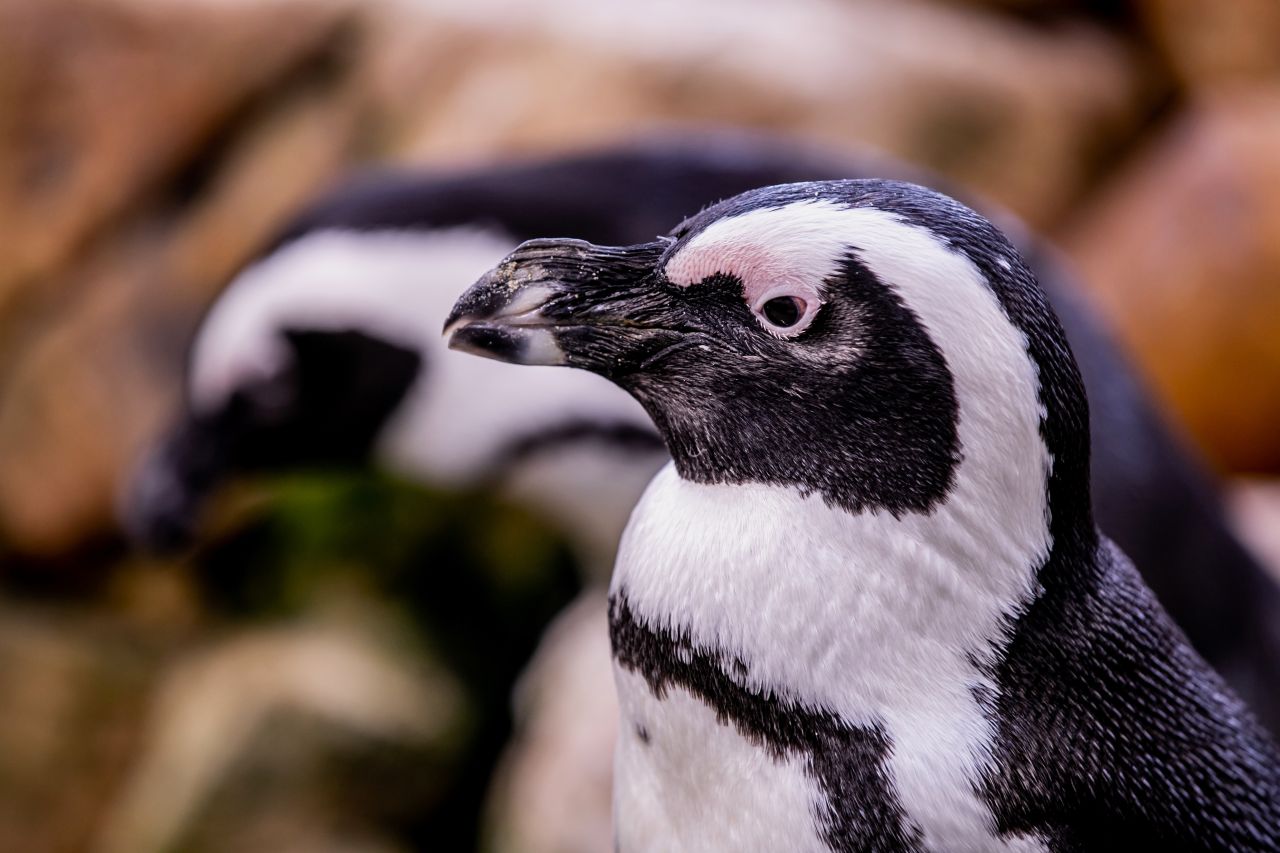
5. Having conversations in a crowd
Human beings can hear sounds as low as 20Hz (the rumble of a far-away truck) and as high pitched as 20 000Hz (so high your cellphone speaker can't produce it). Compared to the flat ear holes of penguins, our relatively giant ear cones are exceptionally good at catching sound, allowing us to determine the direction sound is coming from, and its distance away - useful skills for a land animal.
Penguins' hearing seems much more basic, as they can only hear 100Hz to 15 000Hz, and their small heads and flat ears limit their ability to detect the direction of sound. However, penguins are exceptional at telling frequencies apart - they have the ability to hear the exact call of their chick or mate amongst tens of thousands of other penguins. Especially important considering their "language" has so few words.
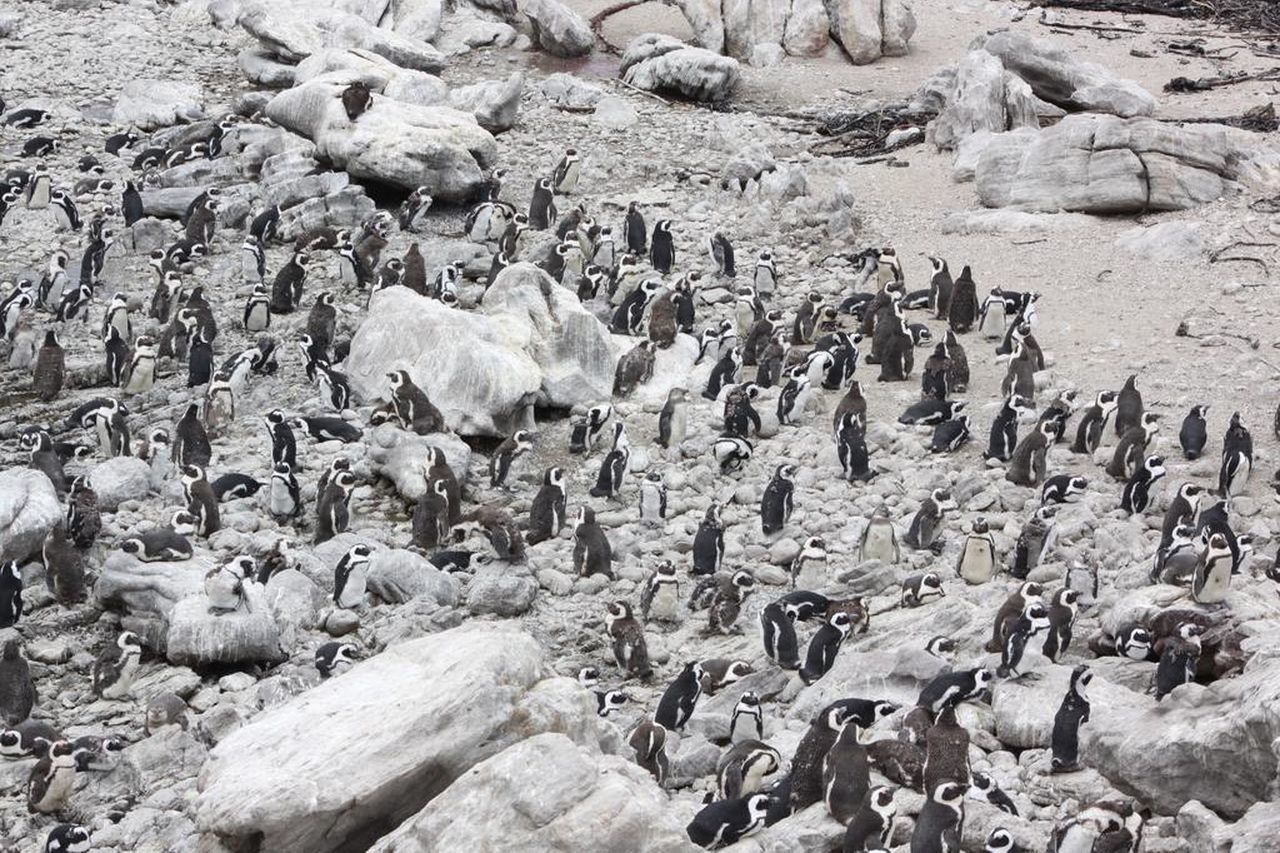
6. Having long-term relationships
African penguins are true masters of romance: 80 to 90% of all African penguin breeding pairs stay together for the entirety of their lives. African penguins return to the same breeding site every year, with mates reestablishing their existing pair bond. They will only begin to look for a new partner if their mate dies, or does not return during the breeding season.
7. Enjoying abstract art
We know that humans can see amazing colour, while animals like dogs are "colourblind". Well, compared to an African penguin, we humans are colourblind too.
8. Sneakily getting what they want
Finding nesting material on rocky and barren shorelines is not easy for penguins, and we can see how they have evolved to cope with this - female Adélie penguins choose the mate who brings them the most stones, rockhopper penguins find existing holes and crevices, and emperor penguins don't even build nests (they just rely on being fuzzy).
African penguins (and their close relatives) dig burrows that they then decorate with bits of debris. Unfortunately, with the destruction of South Africa's guano islands, there is no longer anywhere for them to burrow as sand tends to collapse. To compensate, African penguins collect more "decorations" (twigs, seaweed and even bits of garbage) to insulate their shallow nests. As these resources are scarce, they have become very adept at sneakily stealing bits of nesting material from each other.
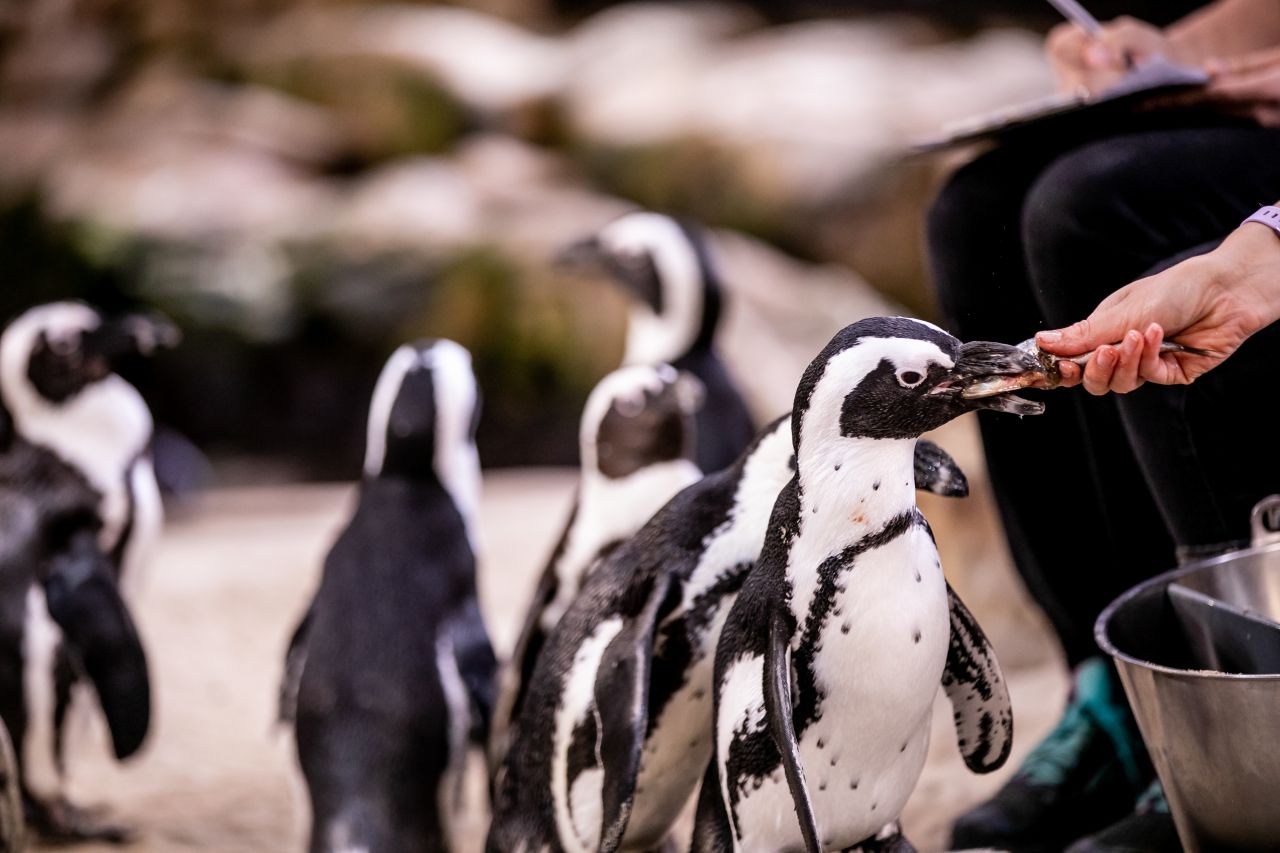
9. Babysitting
African penguin parents share all the babysitting responsibilities. They spend approximately 40 days taking turns incubating their eggs, while the other parent goes hunting for food or guards the nest from predators.
When the chick has hatched and is able to walk, multiple couples group their chicks together in a "crèche" so that fewer adults are needed to protect them. This allows both parents to go out hunting and bring food back to the fledgling.
After about four months in this crèche, juveniles are old enough to forage for themselves and head out to fend for themselves in the wild.
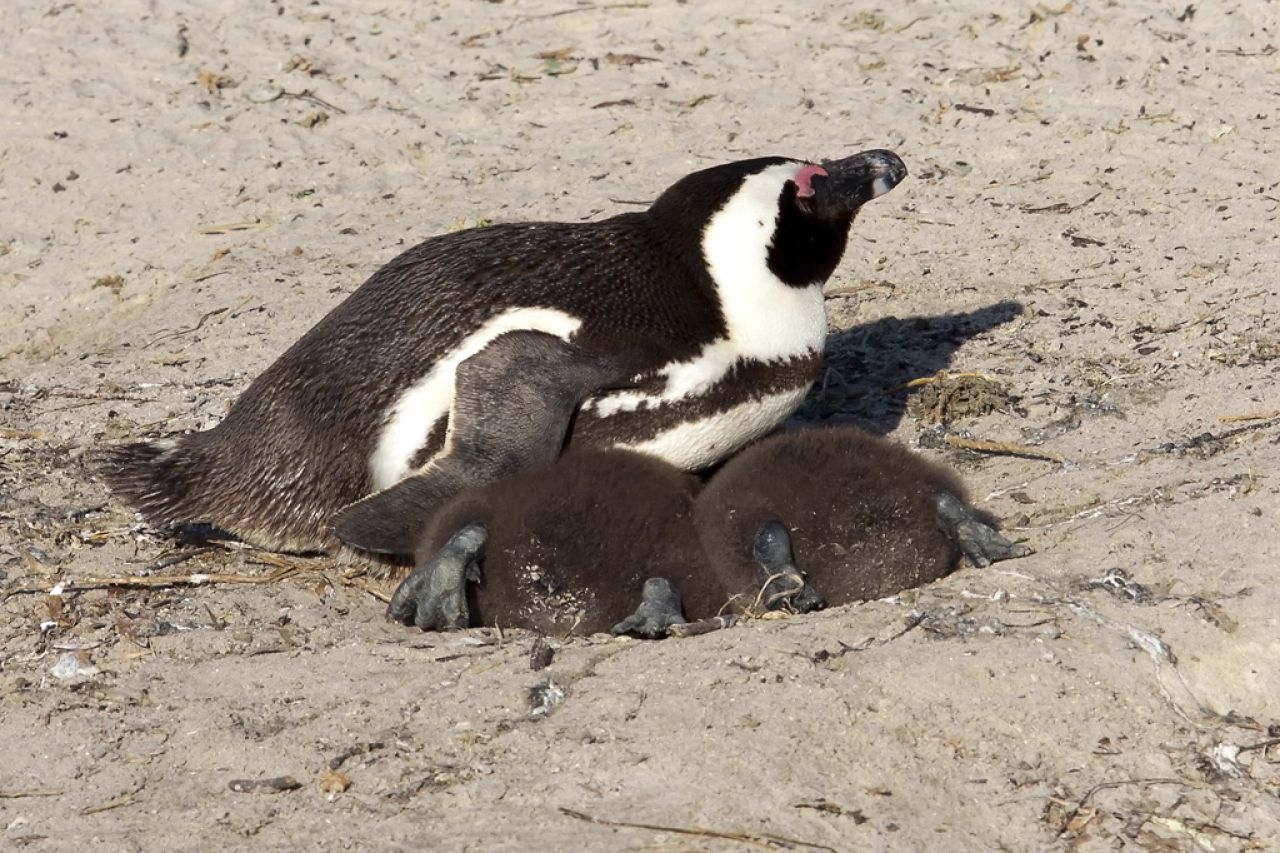
10. Eating & drinking
Have you ever seen a penguin drinking fresh water? Nope, because they don't. African penguins swallow salt water when they are swimming. A specialised suborbital gland filters salt out of their blood, and they then sneeze this salt out.
Penguins also have very few tastebuds compared to us - they don't even have the DNA to be able to taste bitterness, sweetness or umami (savouriness). All that they are able to taste is salty or sour - which is important as these are the tastes that allow them to eat only fresh fish, not rotting ones. Imagine if we could be healthy all the time, not craving chocolate and being able to eat really gross-tasting health food with ease.
